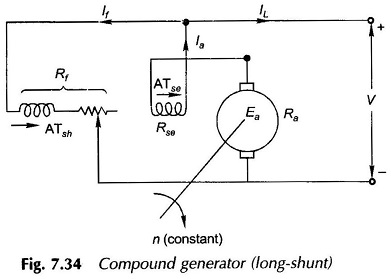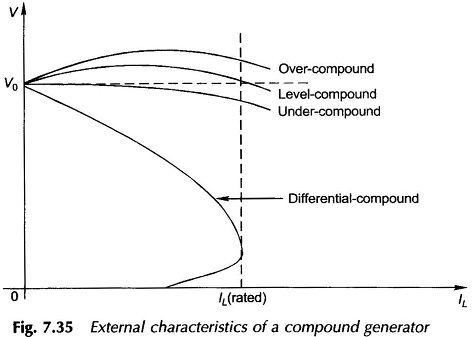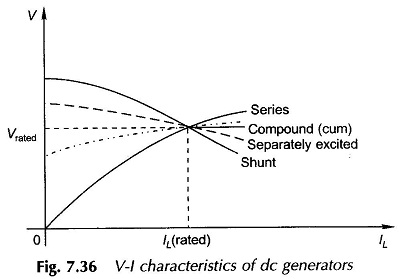External Characteristics of Compound Generator:
External Characteristics of Compound Generator – The causes of voltage drop in the terminal voltage from no-load to full-load in a shunt generator can be partially/fully/over-compensated by use of an aiding series field (cumulative compound), which can be connected in a long- or short-shunt (long-shunt shown in. Fig. 7.34).
The aiding ampere-turns of the series field automatically increase with the load, compensating the armature voltage drop. In level-compound generator full-load voltage equals no-load voltage. Steady-state volt-ampere (V-I) characteristics of a compound generators are shown in Fig. 7.35.
Differential compounding is not used in practice as the terminal voltage falls off steeply with load. Long or short-shunt connection of series winding makes only a marginal difference in the V-I characteristic of a compound generators.
Comparison of Volt–Ampere VI Characteristics of DC Generators:
The V-I characteristic (steady-state) of various types of dc generators are shown in Fig. 7.36. These are drawn with rated terminal voltage at full-load. The characteristic curve of a series generator, not discussed earlier, is also shown here. It is a rising characteristic and excitation increases with load (If = la= IL). At large values of load current, the terminal voltage must start decreasing owing to the saturation of machine iron and rapidly increasing voltage drop of armature reaction and armature resistance.


